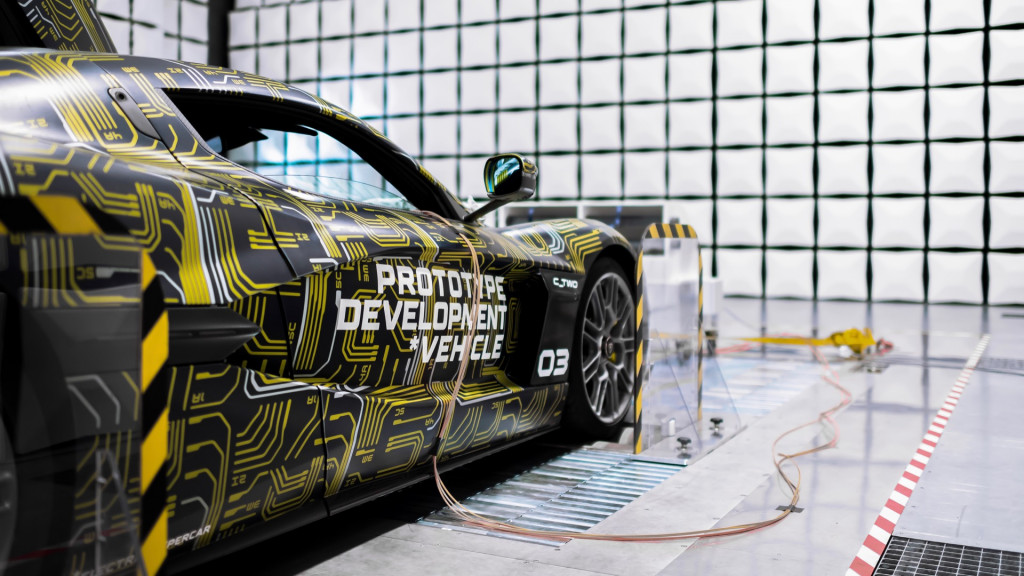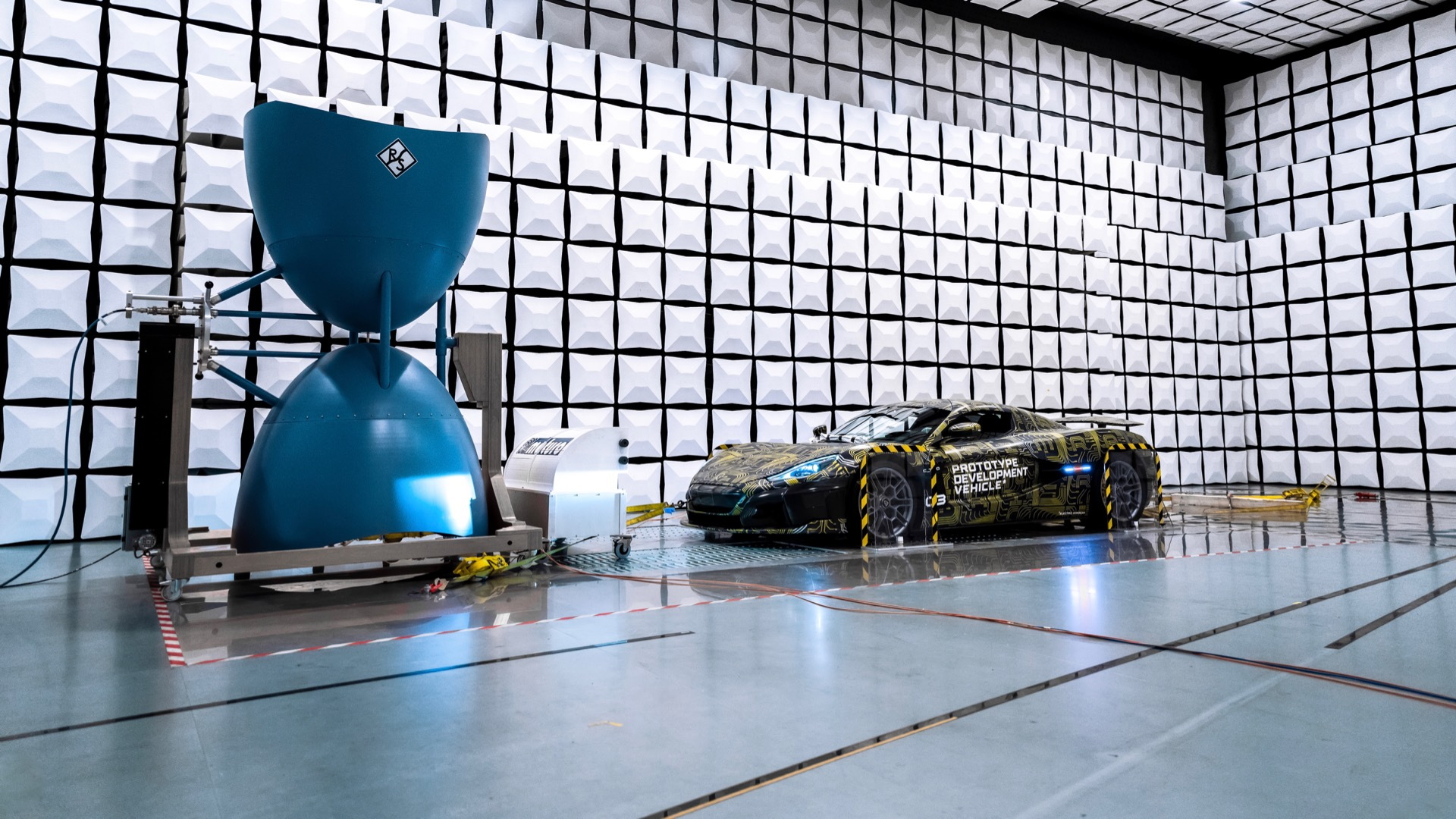The Rimac C_Two electric supercar is undergoing final testing and regulatory certification ahead of the start of deliveries in 2021. Part of that process involves testing for electromagnetic emissions, the Croatian company explained Wednesday in a release and video.
All electronic devices produce some amount of electromagnetic emissions, and those emissions can also interfere with electronics.
So if a car's emissions are too high, traffic lights, speed cameras, and cell communications could be interrupted. Conversely, if the car's onboard systems are not resistant enough to interference, things like the air conditioning and radio might not work properly.
In Europe, electromagnetic emissions are tested according to the European Union ECE R10 standard. Testing is required for cars to be homologated for sale, Rimac said.

Rimac C_Two electromagnetic-emissions testing
The testing procedure involves placing a car inside a semi-anechoic chamber, which sealed off from outside electromagnetic emissions to ensure accurate test results. The car is driven at certain speeds on a dynamometer, then subjected to radiation of between 20 MHz and 20 GHz. Accessories like air conditioning, lights, and windshield wipers are turned on at certain points to ensure they work properly. In the case of the C_Two, the different drive modes were also tried to ensure inverters and other hardware worked as designed.
Once the initial test is completed, Rimac completely disassembles its prototype cars, makes any needed tweaks, and then reassembles them to run the tests again.
It's just one example of the extensive testing new cars must undergo before they reach production—even 1,914-horsepower electric supercars.
Rimac, which has ties to Porsche and Hyundai, noted that electric cars produce substantially higher electromagnetic emissions than internal-combustion cars, which is to be expected, as they don't have large motors onboard.
Multiple studies have verified that EVs don't produce enough electromagnetic emissions to be a cause for concern to those using pacemakers and other implants. Although MedTronic, the maker of many of these devices, has said in the past that your device shouldn't be within 24 inches of a large motor or current source.
A study published earlier this year also found that electromagnetic interference concerns are actually greatest not when the car is being driven, but directly around it—when it's being fast-charged with high-power hardware.


















